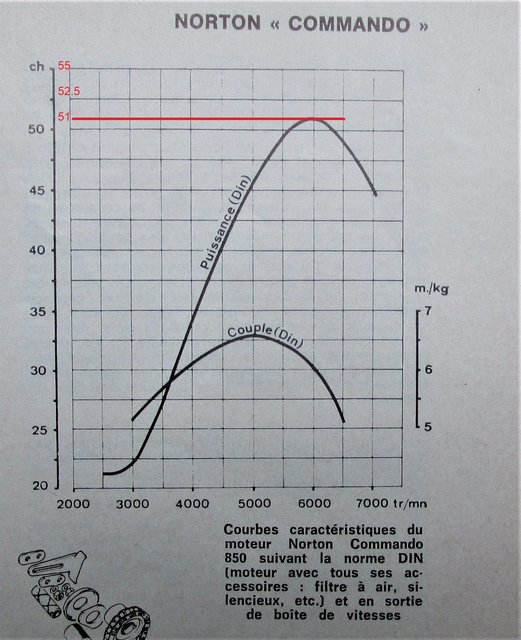I have recent dyno figures for standard 750 and that indicates 48 at the rear wheel, a standard 850 will be low 40's. There are also dyno traces from the 70s in existence, I've seen them but not sure where the files are now.
Not sure how much testing Norton did, but I do know they had an engine dyno at Thruxton race shop, I was stood in the room they operated it in only 3 weeks ago.
One thing that also seems to be overlooked is spring rate and cam lift as this can also sap power. Its an area where trade off can be made, approaching max lift with high spring rates could work against what is trying to be achieved.
One successful race team from the early '70s used skimmed heads, HC pistons and most surprising a standard cam.
Not sure how much testing Norton did, but I do know they had an engine dyno at Thruxton race shop, I was stood in the room they operated it in only 3 weeks ago.
One thing that also seems to be overlooked is spring rate and cam lift as this can also sap power. Its an area where trade off can be made, approaching max lift with high spring rates could work against what is trying to be achieved.
One successful race team from the early '70s used skimmed heads, HC pistons and most surprising a standard cam.


